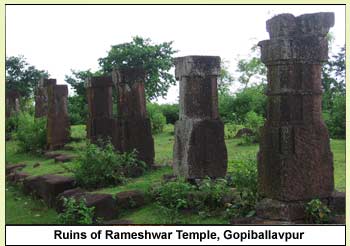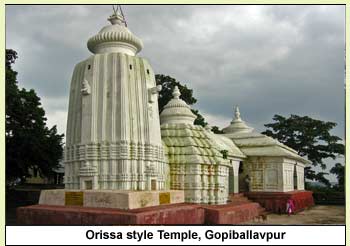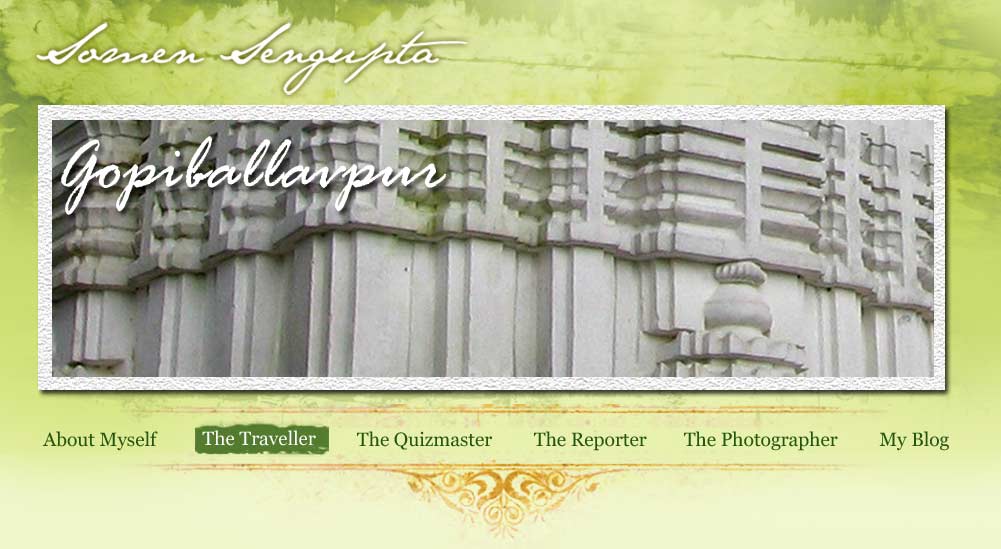|
The landscape of this little-known place in West Midnapore seems straight out of a master painter’s canvas. The panorama of the Subarnarekha, a vast dark green forest and the ruins of a temple whose legend dates back to the Ramayana, make for a wonderful holiday. The place was earlier known as Kashipur. Shyamananda Mahaprabhu, a prominent figure in the Vaishnava cult, visited a temple in the village and named it after Gopiballav. Kashipur came to be known as Gopiballavpur since then.

A temple named after Gopiballav is still there but the local residents do not know whether the area owes its name to it. The temple is run by a well-known Vaishnava family in the region. The charming Subarnarekha flows past this getaway at the border of West Bengal and Jharkhand. The river, whose names in Bengali and Hindi (Swarnarekha) mean the golden line or golden streak, is born on the Chhotanagpur plateau. It passes through the western part of Bengal before emptying into the Bay of Bengal near Talsari in Orissa.
The Subarnarekha was once rich in bauxite. According to local lore, many had found gold dust on the riverbed at a place called Piska. However, it appears now that the banks made of golden sand — which look magical against the blue sky — inspired the name.
The river in Gopiballavpur is tame. Except during the rainy season, the water does not cross the knee-level. Like the banks, the bed is sandy. At twilight, the riverbed and the banks glitter like gold. The best place to view the river is the Sidhu-Kanu-Birsa bridge, recently built on it. Even the bends appear artistic.
The banks are lovely places to be in autumn when milky white kash is in bloom. The flowers bend and straighten as the breeze blows through them, creating the appearance of waves.
One of the main attractions of Gopiballavpur, the ruins of Rameshwar temple, is also on the riverbank, 19 km from the bridge. Not much is known about the stone temple, which was dedicated to Shiva. Locals say that Sita asked Ram to construct the temple and it was built by none other than Vishwakarma. However, there is no reference to the temple in the Ramayana.
 A new temple has come up near the ruins. It bears characteristics of the Orissa school of architecture. Three important characteristics of the school — biman, jagmohan and naatmandir — can be easily seen. There are three flying lions on biman. The shivling is deep within the garva griha. A new temple has come up near the ruins. It bears characteristics of the Orissa school of architecture. Three important characteristics of the school — biman, jagmohan and naatmandir — can be easily seen. There are three flying lions on biman. The shivling is deep within the garva griha.
The temple is not much to look at but the setting will make your heart beat faster.
The remains of the old temple are just as thrilling. A series of stone pillars stand side by side like sentinels. They may remind you of the enigmatic moai statues on Easter Island. The forest in the background adds to the effect.
Designs are carved on the black pillars, most of which are on the right of the temple. A few are at the back.
Near this temple, inside the dark green forest, is a place known as Tapavan. Locals believe that this was the hunting ground of Ratnakar, who later became Valmiki and wrote the Ramayana. There is an ashram here, where Sita is believed to have given birth to her twins, Lav and Kush.
The stones contain the footprints of Sita, according to the residents of Gopiballavpur. The forest is full of monkeys, who are presumably descendants of Ram’s vanar sena.
If you stay more than a day, venture out to Jhilibandh, Shyamatarangini dam and Hatibari. These places have rarely been explored by tourists and are known for their natural beauty.
Going
Gopiballavpur is about 48 km from Jhargram. Take Ispat Express from Howrah station in the morning to reach Jhargram. The journey takes a little more than two hours. Have breakfast in the town and hire a car to reach the Subarnarekha bank. The rate is approximately Rs 5 per kilometre. Rameshwar temple is a 12-km drive from the river bank.
Staying
There are no hotels in Gopiballavpur. The nearest place to stay is Jhargram. The eating options in Gopiballavpur are limited, so pack food and water when you set off for the tour. Try to return to Jhargram by sunset. Do not venture into the jungle alone. There is no restriction on photography.
|



